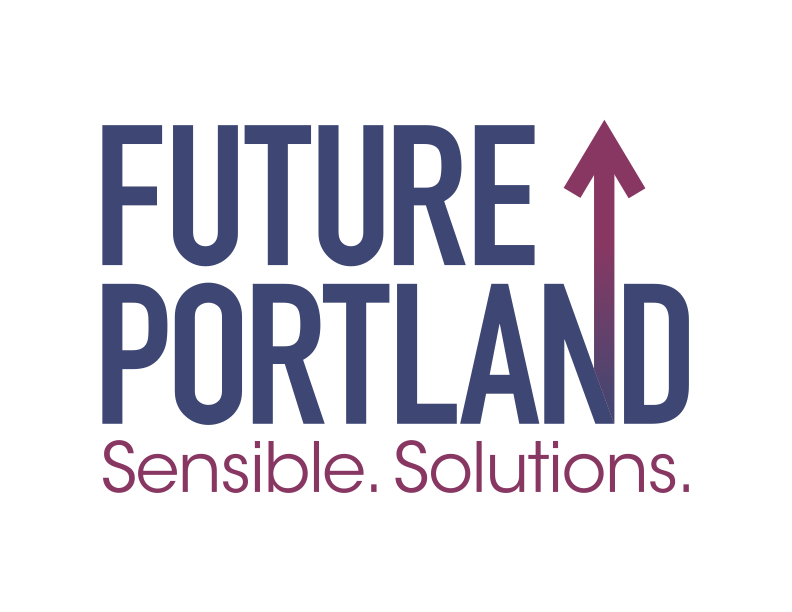Policy Platform
Sanctioned Camping
Built for Zero
Good Neighbor Agreements
HSD (JOHS) Vendor Metrics
Homelessness Plan
Sobering & Recovery Beds
Sanctioned Camping
Oregon presently codifies (via HB 3115) a limited privilege to camp outdoors for the purposes of sleeping, resting, or staying warm and dry. However, this privilege may be restricted in a manner that is objectively reasonable as to time, place, and manner. Moreover, this privilege does not extend to creating fires or committing other crimes – such as sexual assault or weapon-related crimes – in conjunction with camping.
Future Portland agrees that no one should be arrested for sleeping outside, but that we need to set TPM rules so that we can still be a functioning community with usable shared public spaces where all community members can feel safe and healthy. We support the city’s Temporary Alternative Shelter Sites (TASS) as a way to fast track people into transitional housing by giving them a safe space to stabilize at first. We support the variety of other options both private and public partnerships have brought to Multnomah County, from the city’s smaller Safe Rest Villages to county-run 24/7 low barrier shelters to church partnerships to build tiny villages.
We absolutely need somewhere to refer people to as we sweep these illegal encampments, otherwise we are just pushing the issue around. We need more of these spaces available in order to completely outlaw illegal street camping for the safety and livability of our region for both housed and unhoused residents. We need to know where the unhoused are living and what their barriers to housing are so we can truly help them get off the streets and recover from their trauma. This is why we support our new Portland Mayor Keith Wilson’s proposal to quickly expand the number of available shelter beds so we can end inhumane unsheltered homelessness.
HSD (JOHS) Vendor Metrics
Several recent audits have shown the public that Multnomah County does not track line-item spending and results, including in the very important Homeless Services Department (HSD) (formerly known as the Joint Office of Homeless Services (JOHS)) that comprises the majority of their annual budget. Tracking goes hand-in-hand with implementing Built for Zero to ensure transparency and continuous improvement practices for all vendors being paid with county tax dollars and to ensure we are only funding successful programs. We can’t know this until we see where every dollar is going and what the results of that spending are.
Mayor Wilson also gave a presentation while he was campaigning regarding the manner in which Multnomah County chooses to help those in need, opting to go for the “Worst of the Worst” instead of the “Best of the Best” - those who are stabilized and already enrolled in government programming. Data from other cities who have ended unsheltered homelessness has obviously shown that we are doing things backwards, which is why the problem appears to be getting worse despite the large amount of money in the system. This is why we support responsible rent assistance to prevent homelessness and efforts to win more federal funding to ensure we have enough funding available as more people become ready for housing.
Homelessness Plan
There is no overarching plan to combat homelessness in Multnomah County. There are hundreds of small ideas and programs that have been rolled out over the years, but no one larger grand design connecting these programs. The newer Homelessness Response Action Plan attempts to be a plan, but there are still no real goals to create a true continuum of care.
Built for Zero
Built for Zero is at its most base format, a by-name database to track the homeless population. It’s a data collection tool that can be used by multiple agencies that is a continuous improvement and system reform framework to increase the Homeless Services Department’s effectiveness in delivering services and getting people into housing. This is the tool Multnomah County needs to be using for a full transparency and accounting of where our tax dollars are going and where they are being used most effectively. Nonprofit providers need to understand that oversight is not micromanagement and that we are all working on the same goal. Without tracking our direction and progress precisely, it's harder to get there.
Good Neighbor Agreements
We are happy to see Good Neighbor Agreements (GNAs) starting to become the new normal with city and county service sites. As all of the city Temporary Alternative Shelter Sites (TASS) and Safe Rest Villages (SRVs) are moved under full county purview July 1, 2025, we want to see GNAs codified into the Homeless Services Department’s (HSD) standard operating procedures.
The nonprofit service providers the county hires to do this important work are the people who know how to interact properly with this population and offer them alternative options, while also politely asking them to move the proper distance away from the service site that has been agreed upon by the GNA and/or the Time Place Manner (TPM) restrictions. We cannot expect traumatized people to stabilize and start a path to recovery and permanent housing if we are permitting criminality to set up right outside of their new front doors.
Continuing on this path, we would next like to see all private and public shelters and public social services setting up Good Neighbor Agreements with the schools, churches, residents and businesses of every neighborhood they choose to operate in. Multnomah County now has the tools to help facilitate this outreach with private providers looking to provide a service in a neighborhood. Neighbors just want to be informed and given contact information so they can reach out if any issues arise - nobody is against these services, they just want everyone to be good stewards of shared public spaces so that neighbors and clients are able to live in a safe, healthy environment. Creating relationships with the city’s Problem Solvers and Neighborhood Response Teams would also be ideal.
Sobering & Recovery Beds
We are thrilled that Multnomah County is finally building a 24/7 Sobering and Crisis Stabilization Center (aka the permanent ‘deflection center’), but we are dismayed that they continue to tie the need for a simple 24/7 Sobering Drop-Off for emergency responders to the very complex withdrawal management instead of having a faster timeline to open sobering-only. National data says most exiting sobering will not opt for withdrawal management services right away and will likely take several visits before they are ready to move forward. A sobering center is a public safety service more than a health service like withdrawal management is.
Sobering services also serve hundreds of clients every month while deflection services are applicable to a much smaller population due to the restrictions. We will not see this center until the end of 2026, and that’s only if all goes according to plan. We need to start planning for a second center in outer East Portland / East County now since these take so long to build.
We also need the city and county to invest in more recovery housing. This is the biggest bottleneck of our continuum of care and we are holding up withdrawal management beds with folks who could be moved on to recovery housing situations. This could possibly be a great pilot project for office conversions with group meeting rooms, communal kitchens and restrooms.





